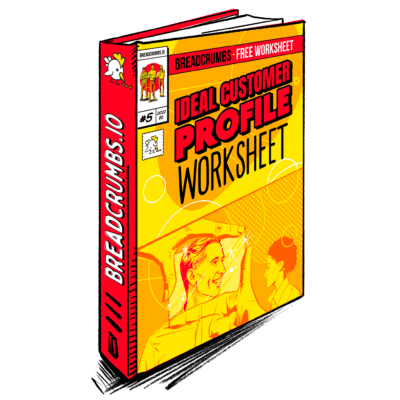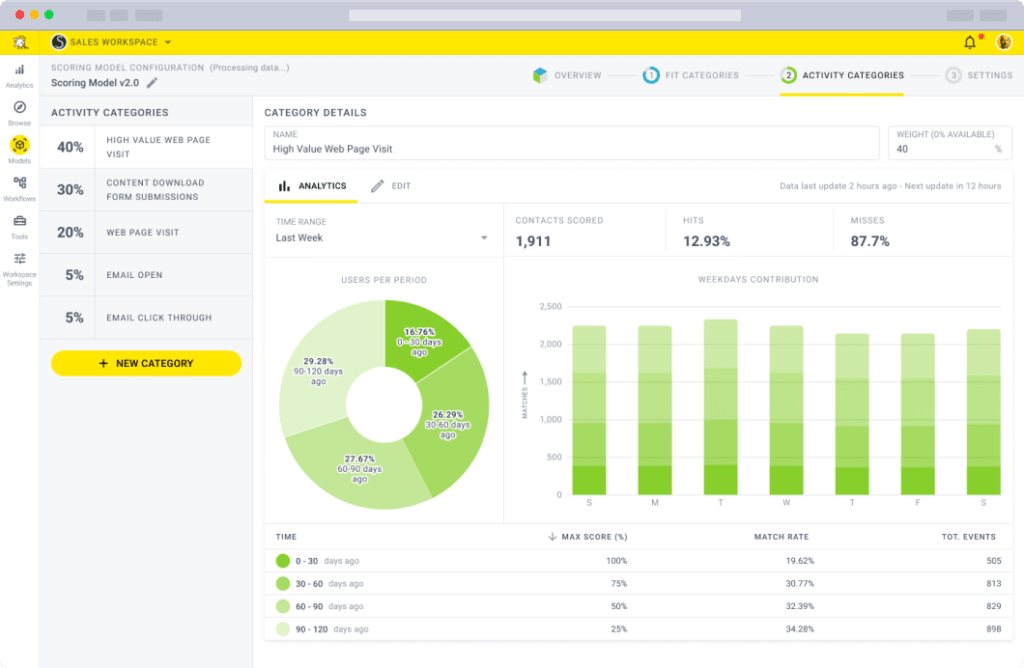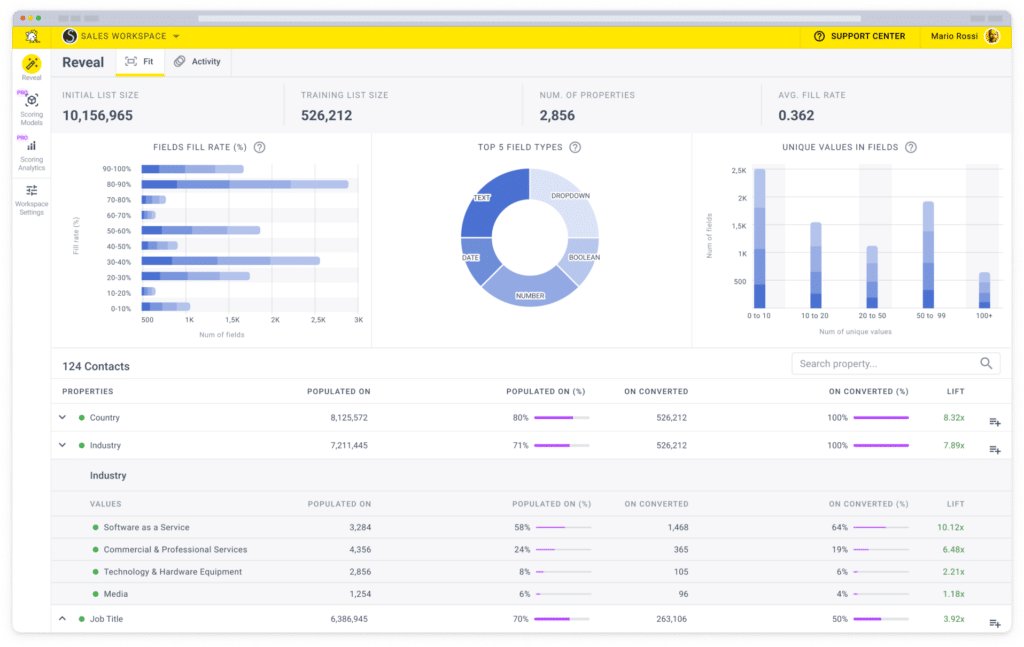The only constant in the B2B marketing landscape is change. And a marketer is only as successful as the data collected from their campaign performance.
The demand for smarter and more effective marketing solutions has never been greater. That’s where AI-powered predictive analytics come to the rescue.
While B2B and B2C companies face the criticality of consumer data, from predicting future purchases to customer churn, over four out of five marketing executives struggle to make data-driven decisions despite having all the customer data at their disposal.
That’s why around 95% of companies now integrate AI-powered predictive analytics into their effective B2B marketing strategy.
Let’s learn how you can leverage it to the fullest.
Role of AI-powered Predictive Analytics in B2B Marketing
Predictive analytics is an emerging technology that uses artificial intelligence and advanced machine learning algorithms to analyze data and forecast future events and trends.
To shed light on the tremendous potential of AI-based predictive analytics, Pecan surveyed 250 US marketing executives. Here’s what they learned:

In the B2B marketing space, AI-powered analytics take center stage, offering multiple ways to enhance your marketing strategies. These include:
1. Target audience segmentation
AI-driven analytics can help you target audiences based on various parameters such as behavior, demographics, and history, enabling marketers to tailor messages and strategies more effectively.

Ebook
Ideal Customer Profile (ICP) Worksheet
Learn how to create an Ideal Customer Profile and build a successful sales strategy with this Ideal Customer Profile (ICP) Worksheet.
2. Personalized content
AI algorithms analyze user behavior and preferences to suggest personalized content. This enhances the user experience and increases conversion rates.
AI can also help automate the creation of personalized, relevant content for social media platforms to create B2B marketing campaigns that convert, saving time and resources.
3. Campaign forecasting
AI-generated data can help you predict the outcomes of account-based marketing campaigns accurately, allowing marketers to make data-driven decisions, improve strategies, and set realistic expectations.
4. Lead scoring and qualification
AI-driven lead scoring models can help you assess the quality of potential buyers based on social media channel engagement, helping sales teams focus their efforts on high-potential prospects.

5. Optimizing marketing spend
Predictive analytics, combined with advanced AI technologies like text-to-speech software, empowers advertising experts to make data-driven decisions confidently.
Using past data and market trends, AI can help you predict future trends and outcomes, enabling you to use resources efficiently and optimize B2B campaigns for better strategic advantage and maximize your ROI.
Linking Predictive Analytics with Lead Scoring
Predictive lead scoring combines historical data, machine learning algorithms, and real-time information to predict the chances of potential clients becoming a customer.
The ability to identify ideal customers can make or break your marketing efforts. With linking, you can gain valuable insights into lead behavior and potential value, leading to smarter and more successful campaigns.
Predicting lead behavior
- Advanced algorithms identify behavioral patterns that indicate a lead’s chances to engage or convert.
- Predictive models determine B2B customers’ preferences, enabling you to deliver interactive content that’s relatable to them.
- You can predict when a lead is most likely to make a purchase, helping you time your email marketing strategies effectively and increase conversion rates.
Assessing potential value
- Using historical conversion rates and average deal sizes, predictive models can estimate the potential revenue associated with each lead.
- These analytics can calculate the expected lifetime value (LTV) of a lead, allowing you to prioritize those with the highest long-term value.
- It also helps you predict the likelihood of a lead churning after conversion, making for proactive retention strategies.
A report suggested that around 46% of marketers wish to use AI to predict customer churn value and retention, and 40% would like AI to determine customer lifetime value.

These data points show the importance of predictive analytics in today’s marketing landscape. But how can you effectively leverage predictive analytics to gain actionable insights?
Enter Breadcrumbs—a sophisticated tool for modern predictive analytics and everything you could need to ace your lead scoring.

Unlike traditional lead scoring, predictive lead scoring is one of the most effective marketing tools that works beyond historical data and fixed criteria. It empowers companies to make critical business decisions in a dynamic B2B landscape.
It uses:
- Real-time intent signals help you to identify leads in the early stages of their buying journey.
- Machine learning-driven approach to adapt and evolve your leads and market dynamics change.
- Proactive decision-making to anticipate B2B customers’ needs, seize opportunities, and confidently navigate challenges.
Implementing AI-powered Predictive Analytics for Smarter B2B Campaigns
In innovative B2B marketing strategies, on-time delivery and efficient operations are as critical as analytical insights.
Take, for example, the concept of “same-day freight.” Although it might seem unrelated, AI-based analytics can predict peak demand, optimize routes, and ensure that transportation services meet B2B buyers’ needs in real time.
So, by integrating predictive capabilities, you can offer unparalleled service while improving the effectiveness of your marketing campaigns. That’s music to all B2B businesses’ ears.
Follow these five simple steps to add predictive analytics to your B2B campaigns:
Step 1: Define objectives and goals
Outline your B2B marketing channels’ goals, discussing what you want to achieve with them, whether it’s improving lead scoring, increasing conversion rates, or enhancing customer retention.
Step 2: Data collection and analysis
- Gather and consolidate data from various sources, such as free TTS tools.
- Protect data quality through cleaning and validation.
- Perform exploratory data analysis (EDA) to understand your data better.
- Select and engineer relevant features for predictive modeling.
Step 3: Model selection and deployment
- Choose suitable AI and machine learning algorithms.
- Split data into training and testing sets.
- Train and fine-tune the predictive model.
- Deploy the trained model into your marketing systems.
- Leverage real-time data input for continuous predictions.
Step 4: Team training and collaboration
- Implement data security measures to protect sensitive information.
- Train your marketing team to use predictive insights effectively.
- Foster collaboration between data scientists, marketers, and IT teams.
Step 5: Evaluate and expand
- Continuously evaluate the impact of AI-powered predictive analytics on your marketing campaigns.
- Iterate innovative B2B campaigns based on results and feedback.
- Expand and scale its use to other business areas, such as customer support, product development, or sales.
Real-time Examples of B2B Companies
Now, let’s take a closer look at a few B2B companies that have effectively deployed AI-powered predictive analytics to drive better business results.
1. KONE

KONE, an elevator and escalator manufacturer, employed Salesforce Service Cloud and Einstein Analytics to predict maintenance needs and improve service efficiency.
As daily urban populations swell by 200,000, KONE is enhancing its systems’ intelligence and connectivity using data analytics and artificial intelligence.
This strategic move is aimed at addressing the escalating needs of burgeoning high-density urban developments and delivering enhanced value to their clientele.
KONE’s forward-looking initiatives feature a cutting-edge collaboration between Salesforce Einstein and IBM Watson IoT, designed to optimize the operational efficiency of service technicians who maintain KONE’s equipment.
2. Thinkific

Thinkific had loads of data from various touchpoints. The problem was that it was disjointed and held no value.
Enter Breadcrumbs Reveal analysis.
By analyzing their data and making sense of it, the team at Thinkific could finally see where the value was and how to use it to enhance their strategies. They determined where the gaps were and how to fill them.
Then, step two: lead scoring.
Using insights from Reveal, Thinkific created an acquisition scoring model. They chose the categories with the highest revenue impact from their Reveal results. From there, the new lead scoring system and Breadcrumbs went to work.
Higher-scoring leads were more likely to convert and offered better opportunities for the sales team. The result was dramatic – they doubled their MQL to OPP rate in just three months.
“We’re using data in terms of fit and engagement to really understand how to talk to these people and how to prioritize talking to these people, which has had a tremendous impact.”–Christie Horsman, CMO at Thinkific.
3. FleetPride

IBM Analytics solutions have empowered FleetPride to transform its supply chain management with actionable, data-driven insights.
With AI-powered predictive models, FleetPride streamlined warehouse operations and staffing. The result? A significant reduction of overtime costs and near-perfect accuracy in order fulfillment.
In partnership with Cresco International, FleetPride has employed advanced analytics to fine-tune its supply chain strategy, ensuring maximum efficiency as its distribution network evolves.
This collaboration highlights the potential of predictive analytics in B2B marketing. Why? Accurate data analysis leads to smarter campaigns, optimized resource allocation, and enhanced ROI. In other words, it sets a new standard for innovation in the industry.
Best Practices and Challenges
Are you ready to employ AI-powred predictive analytics for your next campaign? Here are some best practices and challenges to keep in mind.
Best Practices:
- Start by understanding your business objectives and how AI can help achieve them.
- Identify the right data sources and ensure data quality, privacy, and governance.
- Choose the right AI technology and provider that aligns with your business goals.
- Develop a structured approach to implementing AI, starting with a pilot project and gradually scaling up.
- Train your team on AI technology and its applications to ensure successful adoption.
- Continuously track and evaluate the performance of AI-powered predictive analytics to ensure it aligns with your business objectives.
Potential Challenges:
- One of the biggest challenges B2B buyers face with AI implementation is data quantity and quality.
- Some marketers may doubt the accuracy and reliability of AI-powered predictive analytics.
- Integrating AI with current digital marketing strategies can be challenging, and stand-alone applications offer limited benefits.
Tips to overcome challenges:
- Invest in data collection and quality assurance processes to ensure accurate and sufficient data for AI analysis.
- Provide training to your B2B & B2C marketing teams to build a strong knowledge of AI tools and their capabilities.
- Implement robust security protocols and privacy measures to safeguard against threats.
- Collaborate with professional marketing and IT teams to streamline marketing strategies.
Future Trends to Look at for Predictive Analytics
Currently, around 51% of marketers use predictive analytics for customer-level predictions of future behavior.
As businesses continue to adopt predictive analytics for lead scoring, AI technology is expected to play an even greater role in the future of marketing, including email campaigns.
Here are a few trends that’ll shape the future:
- Increased use of machine learning: Advanced machine learning algorithms will help analyze large data and identify patterns that humans can’t discover on their own, leading to better lead generation and increased conversion rates.
- Integration with other technologies: We’re more likely to see greater integration between predictive analytics and other technologies, such as B2B marketing channels, automation software, AI chatbots, and CRM systems.
- Personalization: We’ll see more personalized strategies and user-generated content to create highly targeted B2B campaigns.
- Real-time analytics: AI-powered predictive analytics will provide real-time insights to adapt marketing strategies quickly and make data-driven decisions.
- Customer retention: By analyzing customer behavior and potential churn risks, businesses can take proactive steps to retain their existing customers.
Final Thoughts
In the era of data-driven decision-making, predictive analysis offers immense value in identifying potential buyers.
By leveraging the power of machine learning algorithms, businesses can build innovative B2B marketing strategies, enhance lead generation efforts, and drive higher conversion rates.
From lead scoring to behavioral analysis and personalization, embracing predictive analytics can provide a competitive edge.
Are you ready to work smarter, not harder, to create successful B2B campaigns and convert potential clients for long-term success?
Give Breadcrumbs a try. You can create your first lead-scoring model in seconds with Copilot. The best part? It’s free.
